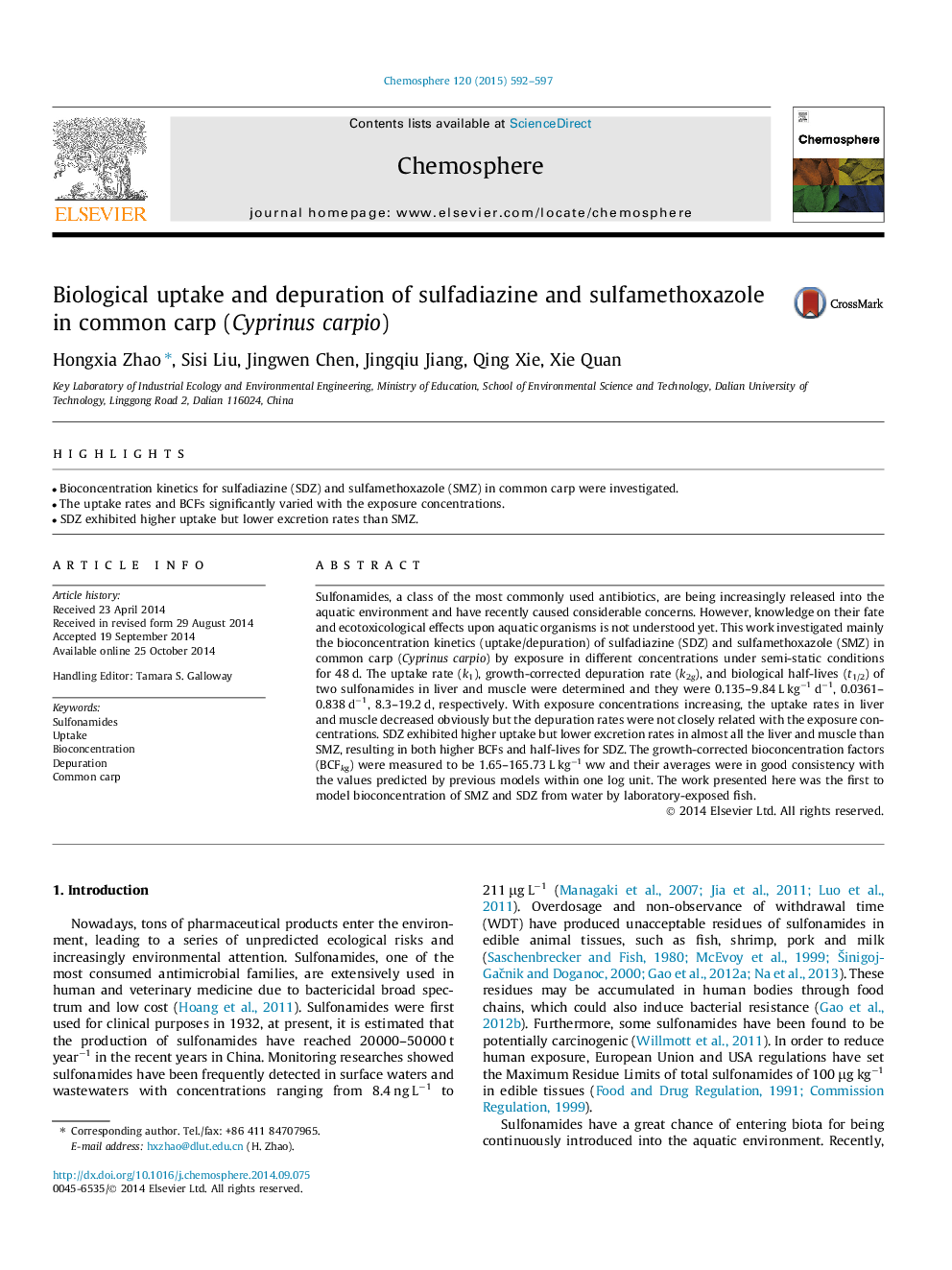| Article ID | Journal | Published Year | Pages | File Type |
|---|---|---|---|---|
| 6308280 | Chemosphere | 2015 | 6 Pages |
â¢Bioconcentration kinetics for sulfadiazine (SDZ) and sulfamethoxazole (SMZ) in common carp were investigated.â¢The uptake rates and BCFs significantly varied with the exposure concentrations.â¢SDZ exhibited higher uptake but lower excretion rates than SMZ.
Sulfonamides, a class of the most commonly used antibiotics, are being increasingly released into the aquatic environment and have recently caused considerable concerns. However, knowledge on their fate and ecotoxicological effects upon aquatic organisms is not understood yet. This work investigated mainly the bioconcentration kinetics (uptake/depuration) of sulfadiazine (SDZ) and sulfamethoxazole (SMZ) in common carp (Cyprinus carpio) by exposure in different concentrations under semi-static conditions for 48Â d. The uptake rate (k1), growth-corrected depuration rate (k2g), and biological half-lives (t1/2) of two sulfonamides in liver and muscle were determined and they were 0.135-9.84Â LÂ kgâ1Â dâ1, 0.0361-0.838Â dâ1, 8.3-19.2Â d, respectively. With exposure concentrations increasing, the uptake rates in liver and muscle decreased obviously but the depuration rates were not closely related with the exposure concentrations. SDZ exhibited higher uptake but lower excretion rates in almost all the liver and muscle than SMZ, resulting in both higher BCFs and half-lives for SDZ. The growth-corrected bioconcentration factors (BCFkg) were measured to be 1.65-165.73Â LÂ kgâ1Â ww and their averages were in good consistency with the values predicted by previous models within one log unit. The work presented here was the first to model bioconcentration of SMZ and SDZ from water by laboratory-exposed fish.
